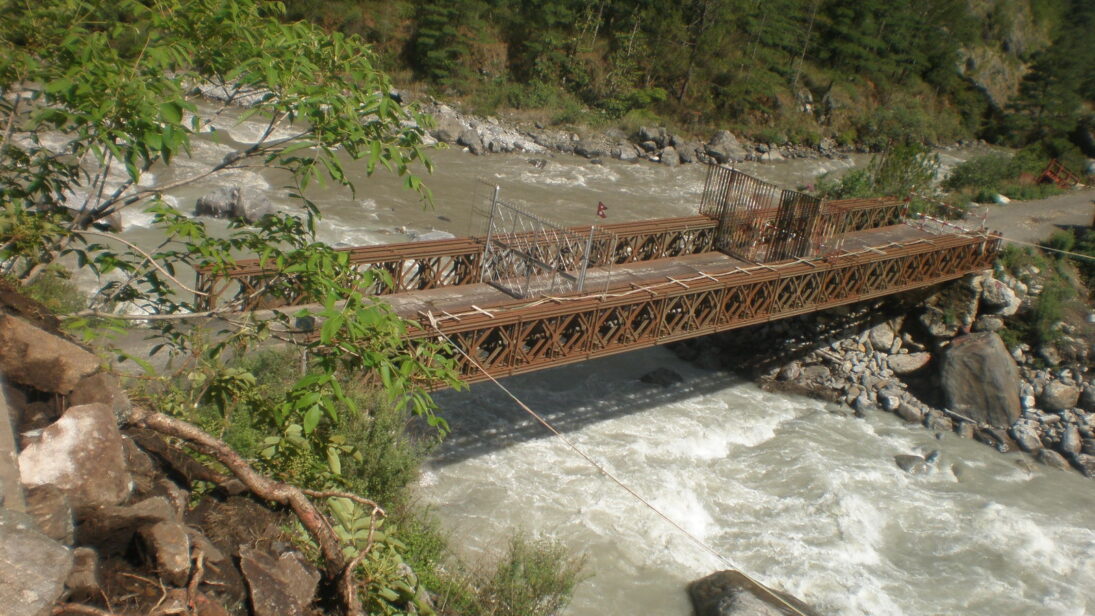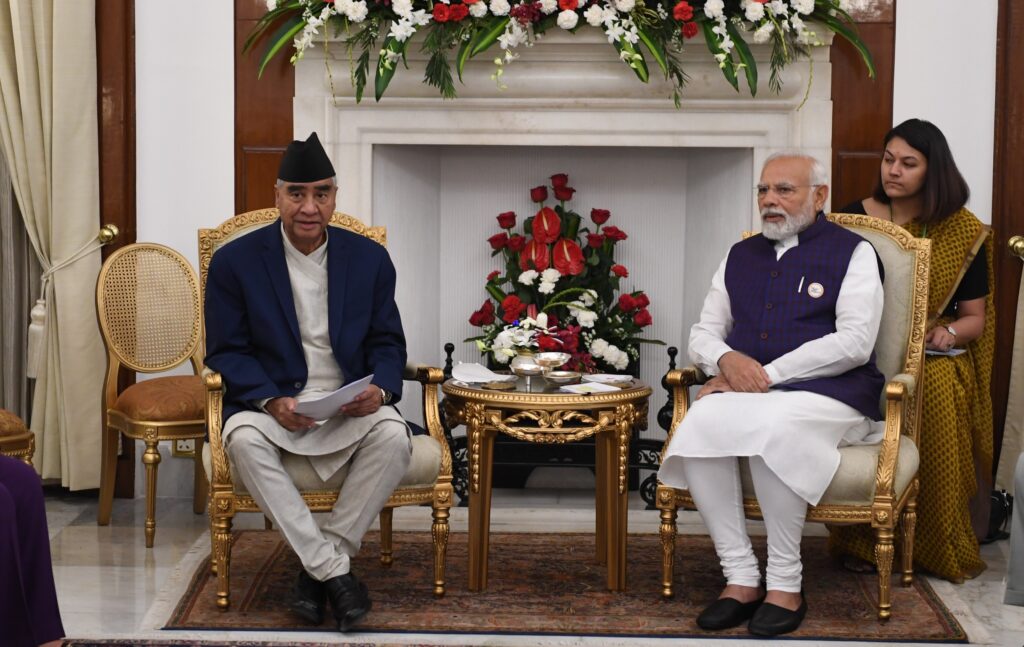
Over the last few weeks, Nepal has witnessed several developmental gains. During the recent official visit by Nepali Foreign Minister Dr. Narayan Khadka on August 9, China announced an approximately USD $117 million grant and several infrastructure projects. Meanwhile, India has granted Nepal access to its western seaports in Gujrat for transit trade, which carries significant political and economic weight in Nepal. As a landlocked country between two regional giants and one of the largest beneficiaries of U.S. development aid in the region, Nepal has become a key area of interest for regional powers. However, Kathmandu has been carefully balancing all external players within its ‘non-aligned’ approach, focusing on domestic developmental needs. With elections scheduled for November 2022, Nepal’s approach will likely continue irrespective of a change in government.
Categorized as a Least Developed Country by the United Nations, improving infrastructure is a key domestic goal for Nepal to achieve economic prosperity. Studies estimate Nepal’s infrastructure development requires around 10 to 15 percent of its GDP. Kathmandu has been leveraging its geopolitical and economic interests to seek a favorable financing mechanism for its grant projects and faster implementation from China and India, especially after ratifying the U.S.’s Millennium Challenge Compact (MCC). By understanding Kathmandu’s domestic aims and regional balancing, both New Delhi and Washington can play to their strengths and maximize the developmental impact of their projects in Nepal.
Regional Balancing
In February 2022, Nepal ratified the USD $500 million MCC-Nepal Compact five years after formally accepting the grant, despite large-scale protests in Kathmandu and from China against US’ “coercive diplomacy” in Nepal. However, Nepal’s Parliament ratified the MCC on its own terms with a 12-point declaration that the agreement is a developmental compact and not a military or security alliance. After ratifying the MCC, Nepal has also been more careful in managing its relationships with neighboring countries, both geopolitically and geoeconomically.
By understanding Kathmandu’s domestic aims and regional balancing, both New Delhi and Washington can play to their strengths and maximize the developmental impact of their projects in Nepal.
Nepal has signed development agreements but has been wary of new military or security partnerships. For instance, in May 2022, Nepal signed a five-year bilateral assistance agreement with USAID for USD $659 million. However, in June 2022, protests in Kathmandu and reservations from China led to the cancellation of the signing of the State Partnership Program (SPP) between the Nepal Army and the US National Guard.
With China, Kathmandu has also managed to secure more grant projects to fulfill its development needs, despite growing protests and reports on its encroachment into Nepal’s territory. During the reciprocal visits of Chinese Foreign Minister Wang Yi to Kathmandu in March 2022 and Nepal Foreign Minister Narayan Khadka’s visit to China in August 2022, Kathmandu was promised grants of RMB 600 million (approx. USD $87.6 million) and RMB 800 million (approximately USD $117 million), respectively, for economic and technical cooperation. In addition, Minister Yi also agreed to the implementation of infrastructure projects, including the construction of the second phase of the Kathmandu ring road, a feasibility study on the Kerung-Kathmandu railway, a pre-feasibility study on a cross-border electricity line, and others.
China’s announcements of grants to Nepal come against the backdrop of increasing Indian and U.S. investments and interest in Nepal. China has also attempted to manage its image in the region, especially in the aftermath of the economic crisis in Sri Lanka. However, Beijing’s promises have not always translated to delivery in Nepal. Despite repeated requests from Kathmandu, China has not opened important trade routes for Nepal – such as the Rasuwa-Keyrung and Tatopani- Jangmu ports – for two-way trade. Under the Belt and Road Initiative (BRI), which Nepal signed on to in 2017, many projects have not taken off. Both countries also differ on the use of the term BRI, as exemplified in the respective country statements post the visits. For instance, after the recent visit, Kathmandu’s statement did not refer to any BRI project, whereas Beijing’s statement highlighted ‘advancing the high-quality Belt and Road cooperation.’ Due to such divergences, China and Nepal have not issued joint statements after this year’s visits. As a result, China’s reliability as an effective development partner for Nepal remains questionable.

Consequently, India has filled the gap left by China in Nepal, both economically and diplomatically. For instance, in 2009, two Chinese companies signed agreements with Nepal to invest in two key hydropower projects, the West Seti Hydropower Project and the Seti River Project, with a joint storage capacity of 1200 MW. However, both opted out in 2011 and 2018. Nepal recently awarded the two projects to India’s public sector enterprise, NHPC Limited, which also benefits India’s ‘Neighborhood First’ policy. During Prime Minister Debua’s visit to India in April 2022, both countries issued a joint statement on power sector cooperation, inaugurated the first cross-border passenger train between both countries, launched the Indian RuPay card in Nepal, and held discussions on other areas of cooperation. Prime Minister Narendra Modi, during his recent visit to Lumbini in Nepal in May on the occasion of Buddha Purnima emphasized the shared civilizational links between both countries, further highlighting a strengthened bilateral relationship.
Strengthening India and U.S. Commitments in Nepal
Despite scaling up commitments, both India and the United States have not been able to counter China’s increasing presence and investments in Nepal. However, instead of competing for grant projects, India and the United States should play to their strengths, both bilaterally with Nepal and in their cooperation in the region.
For the U.S., timely completion of the MCC and USAID projects in Nepal will be a major win. Furthermore, its support for inclusive governance, regulations, and policies in Nepal must remain transparent to avoid political backlash. The U.S. and India can also partner through their development arms and agencies to undertake joint knowledge-sharing and capacity-building projects in Nepal to scale up the impact. Both countries can also expand the Statement of Guiding Principles on Triangular Cooperation for Global Development (SGP) to Nepal.
Kathmandu has already made it clear that it would not like to be a part of any geopolitical or security alliance that affects its developmental interests.
For India, providing a conducive trade and investment environment for Nepal from its larger market will be beneficial. India can leverage the border closure between Nepal and China by providing further access to Nepali goods. This includes early completion of the negotiations on the revised transit treaty and providing greater market access with reduced non-tariff barriers to Nepal. Timely completion and operationalization of key infrastructure projects, such as the Integrated Check Posts at Banbasa, Sonauli, Rupaidiha and Panitanki, and cross-border railways for connectivity to the western seaports will also be crucial. Indian Public Sector Undertakings (PSUs) such as Rail India Technical and Economic Service (RITES), Ircon International and National Highways and Infrastructure Development (NHIDCL) are well equipped to carry out such projects.
At the political level, the United States and India must avoid packaging their various developmental initiatives in terms of geopolitical alliances that have strong security and domestic political implications for Nepal, especially with the upcoming elections in the country. Kathmandu has already made it clear that it would not like to be a part of any geopolitical or security alliance that affects its developmental interests. Therefore, long-term and productive engagement between the United States, India, and Nepal would involve delivering key infrastructure projects, market access, and economic growth.
***
Image 1: Krish Dulal via Wikimedia Commons


